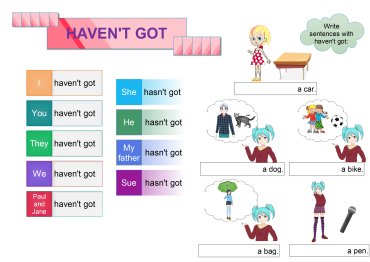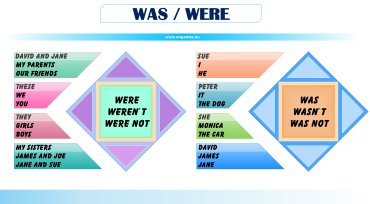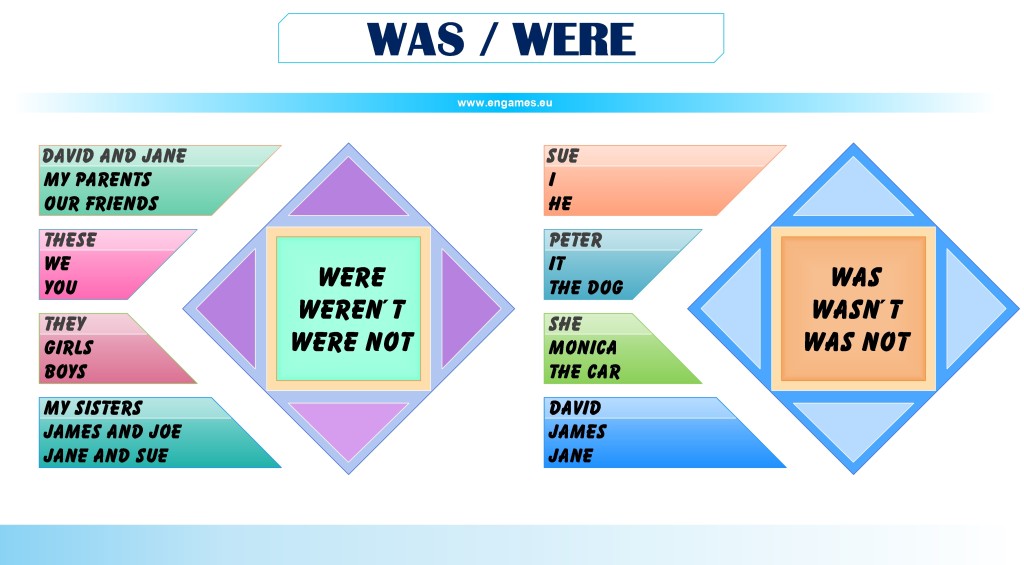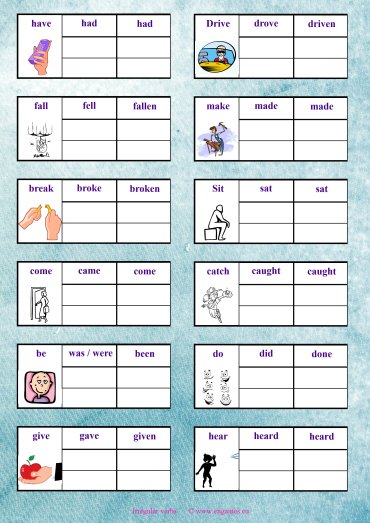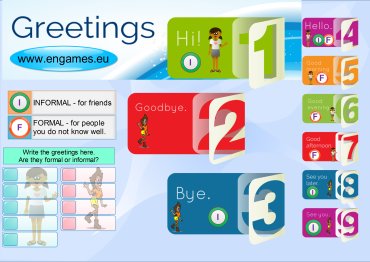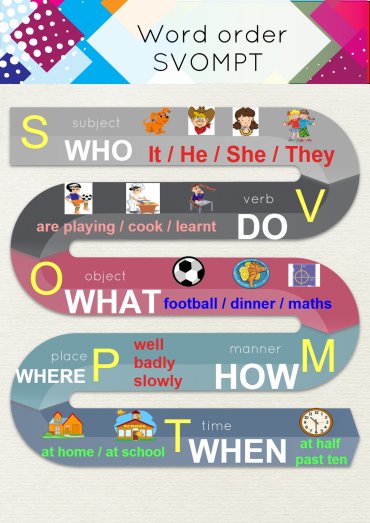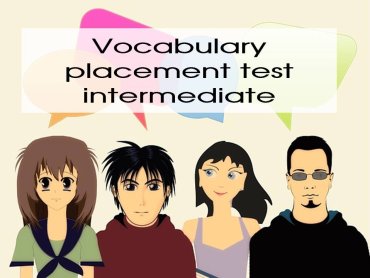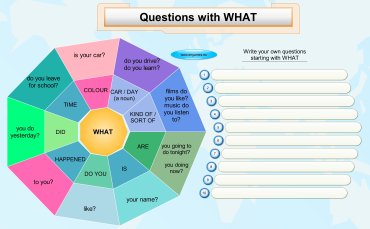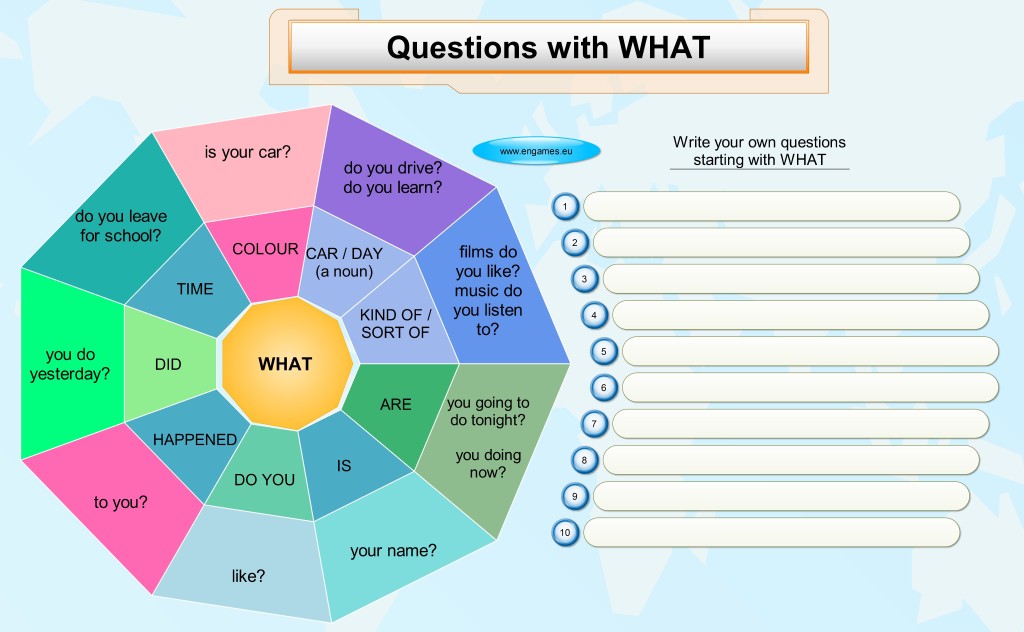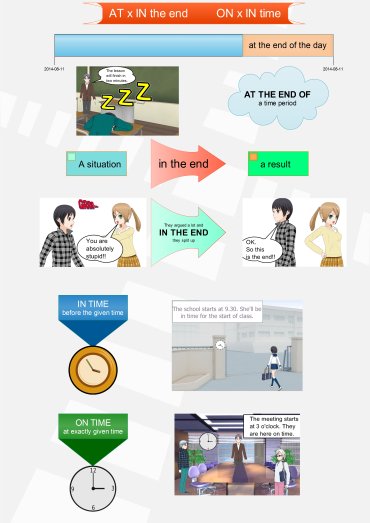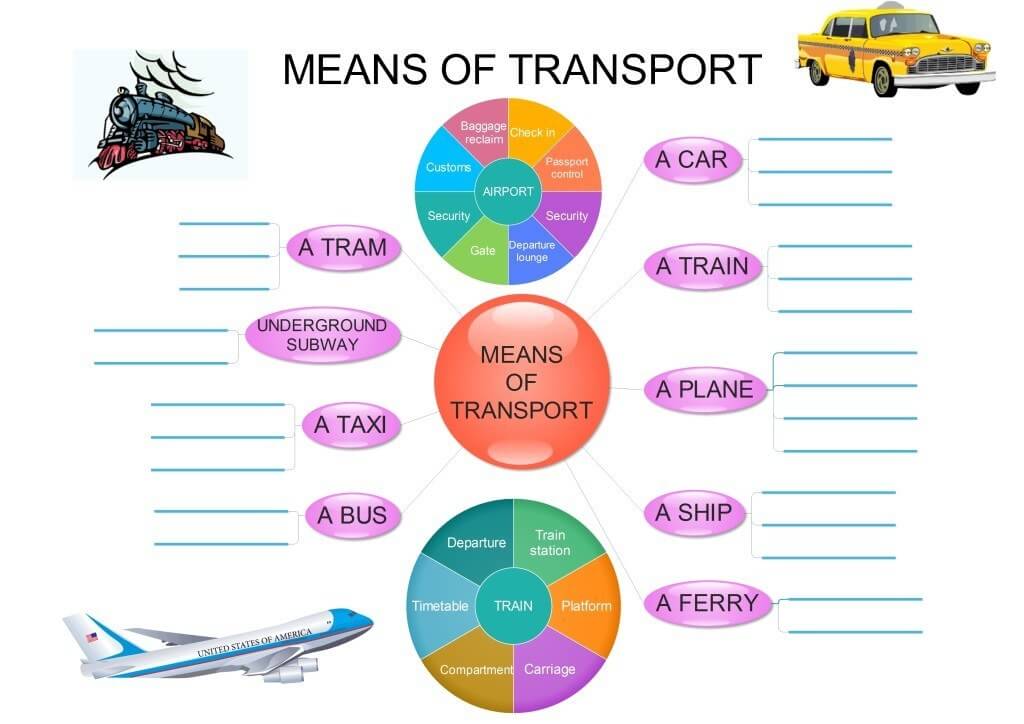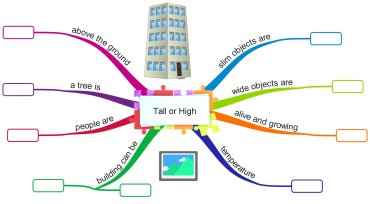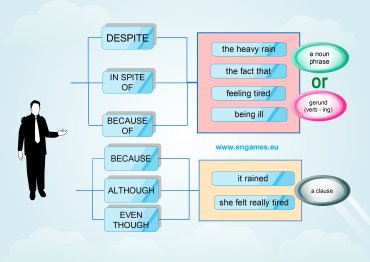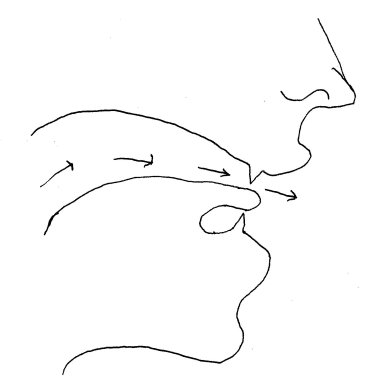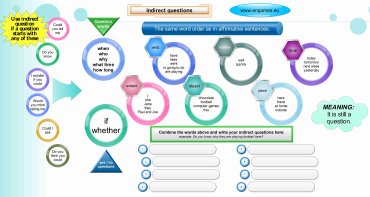Games to help students learn English.
I have already published a post on Present simple and continuous tense here. However, as my teaching situation changed I realize that I need a slightly different type of materials and a bit more of them. So in this post I add the following materials: a Song, Speaking exercise, graphical explanation of the usage of the tenses, three interactive games and a worksheet. I hope you will find these materials really useful.
ADVERT:
[showmyads]
Present simple and continuous tense – visual presentation
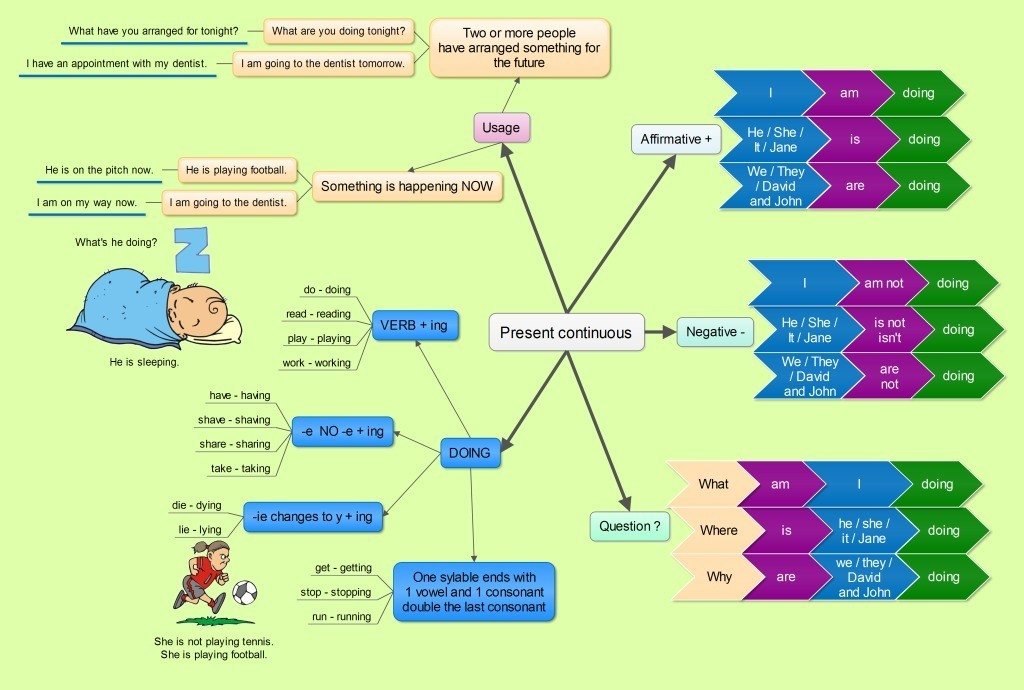
However, here is another graphical presentation of the two tenses. In the presentation I try to demonstrate the difference between usage of present simple and present continous tense.
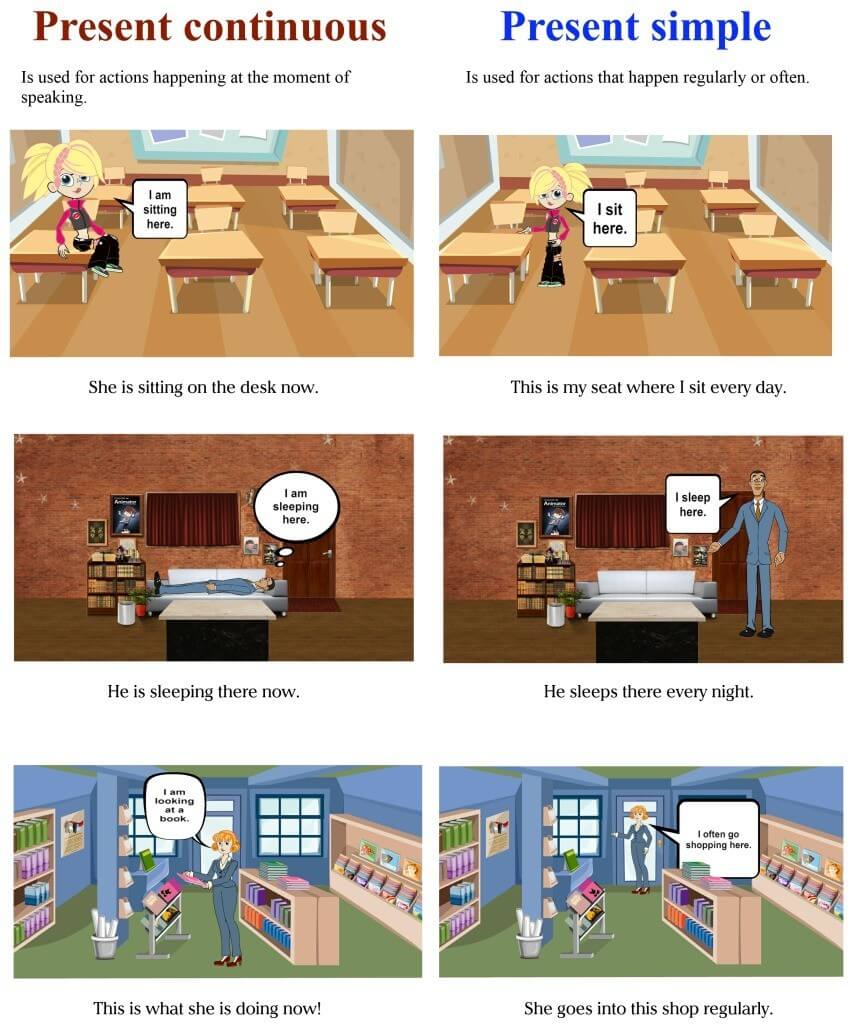
Present simple and continuous tense – Song
You can find more songs for teaching English at http://tutortunes.com
In my lessons I play the song and I ask my students to raise their hands when they hear present simple tense. Then I play it again and I ask them to raise their hands when they hear present continuous tense.
Present simple and continuous tense – Practice
All the other activities concentrate on the difference between the two tenses. The first one is a worksheet where the students should fill in the verb in present simple or continuous tense.
The last three activities are interactive. First, there is a HTML5 version of the worksheet above. If you pass the test, you will be able to play the game called Angry Finches.
ADVERT:
[showmyadsa]
To play the quiz on the full screen click on the button below:
Present simple and continuous – Angry Finches
The second interactivity is once again in HTML5 and it will play on any device. In this one you should fill in the gaps and if you pass the quiz you will be able to play the game Tic-Tac-Toe. This game is a bit of a challenge as there is just one way to win it. Can you find it?
Once again, it is better to play the game on the full screen so you can do this by clicking on the button below:
Present simple and continuous – Tic_tac_toe
The last game is in Flash and it works only on desktops. But it is great for interactive whiteboards. It is called on Target and you have to answer each question correctly and then shoot the bad ducks. Do not forget that you can get a bonus by shooting a bottle on the side 🙂
Present simple and continuous – On targetI have changed jobs and now I teach at elementary school. And even though I think that I am an experienced teacher I have never taught students with actual learning problems. Now I do, and I face real challenges. For example, this week I taught the verb HAVE GOT from the Project 1 textbook, and I failed to teach anything at all. When I asked my students to complete the green table with the correct forms, there was no reaction. And when I asked them to transform the affirmative sentences into negative ones, there was just one student who could do this.
ADVERTISEMENT:
[showmyads]
At that moment, I realised that I have to teach them differently. So I created the following materials to help my students learn to use the verb HAVE GOT in affirmative and negative sentences. I hope I will be more successful this time, and that you will find these materials helpful too.
HAVE GOT – visual presentation
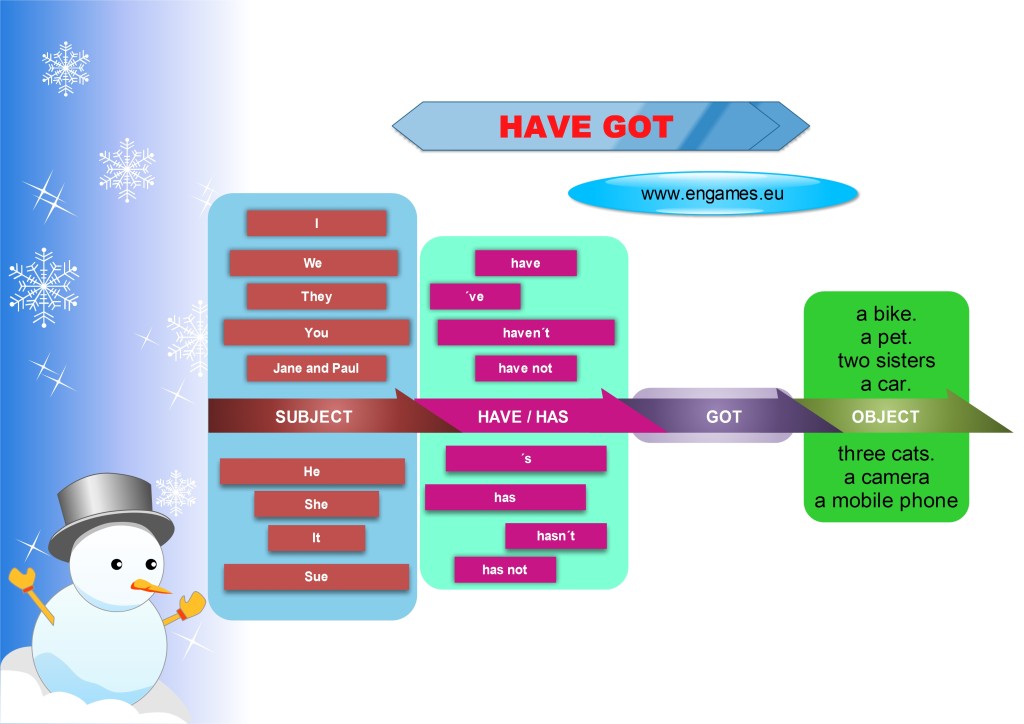
As I write above, table like this was very good for talented students but not for the pupils with learning problems. They need something else. But what?
When we wrote a test on vocabulary 75% of them were able to learn all the words correctly. So why not teach them the verb and its forms as a vocabulary item. No fine deduction just a crude memory work. I believe that is the way. So I have created the following graphical presentations.
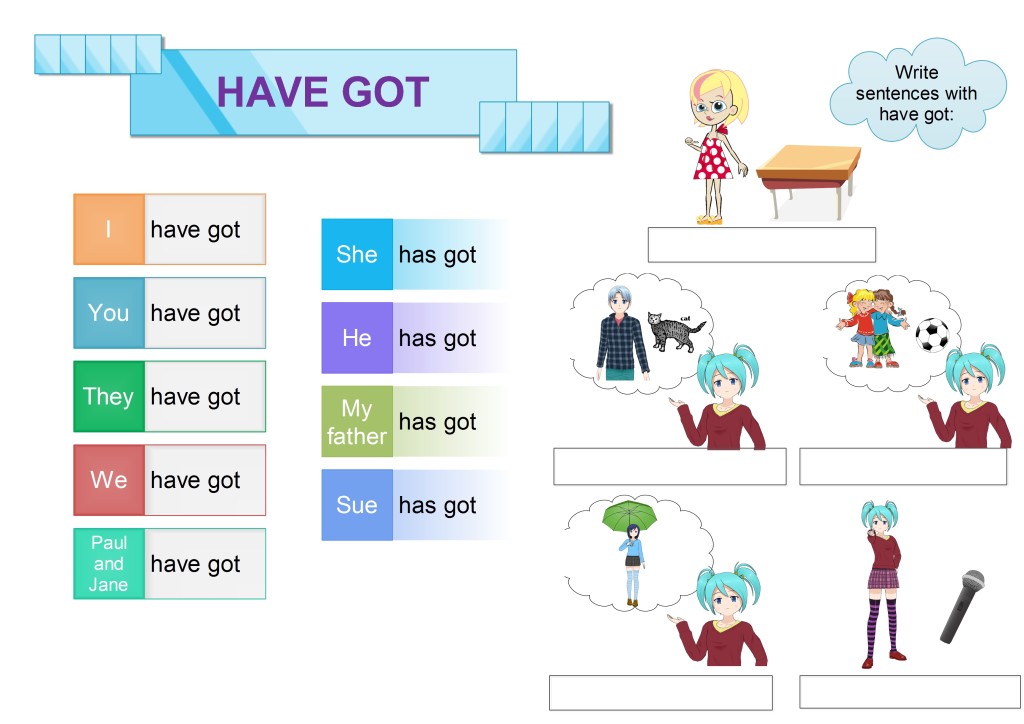
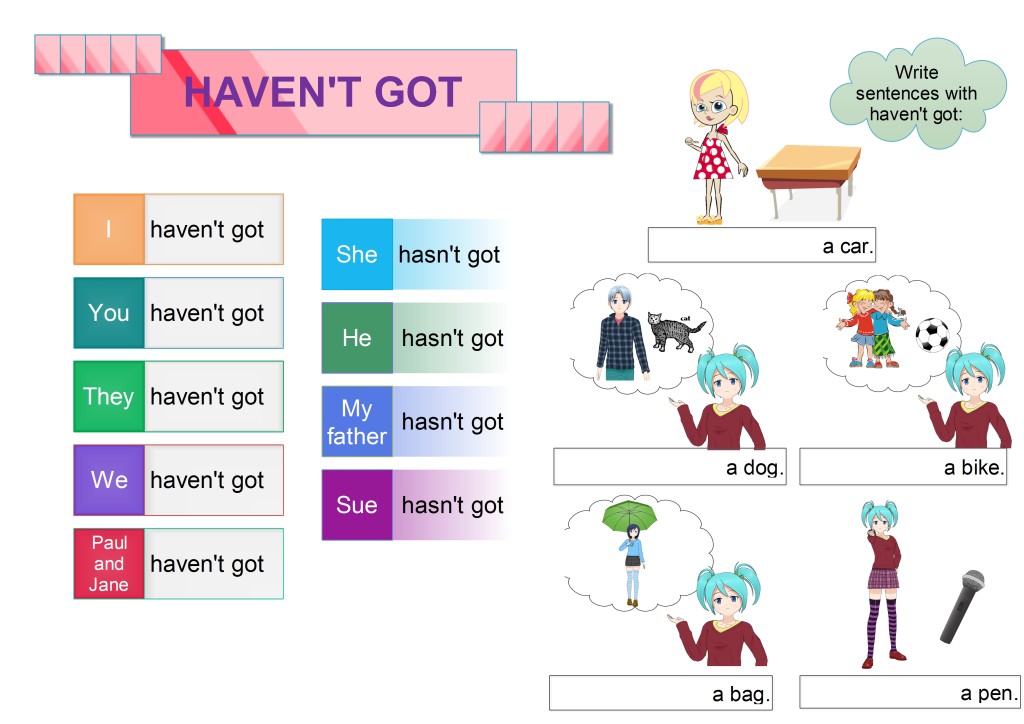
Ask your students to learn the forms by heart. Then ask them to use the phrases and write sentences to the pictures. If this proves too difficult write the five sentences randomly on the board and ask them to match them to the pictures and copy them.
Work in the same way with the negative sentences. In this way the students might comprehend the logic behind the forms or they will just remember the phrases and thus be able to use them.
HAVE GOT – classroom practise and worksheets
The first activity is called MT Board. I have create the following worksheet. At the top there is a table with the mother tongue sentences (the sentences are in Czech, so you have to change this one if you are not Czech). Below it there is the same table with the English sentences. Cut the English sentences along the lines and leave the mother tongue board intact. Ask the students to work in pairs and give them the Mother Tongue board and the English pieces. Ask them to place the pieces on the
board. Check their answers.
Board_push_have got
ADVERTISEMENT:
[showmyads]
The second activity is called a pair card. Print out the following worksheet and cut it in the middle (from top down not from side to side). Ask the students to work in pairs. Each student gets 8 completed sentences and 8 sentences with gaps. Students read (they must not write anything) their gapped sentences and complete them with the correct forms of the verb HAVE GOT. Their partner listens and checks or corrects their answers (He/she has the full sentences). Once they finish they can swap their cards and start again.
The last classroom activity is a drill. Once you feel that your students got the hang of the grammar, you can play the following recording. The native speaker will say the subject and the students have to supply the correct form of the verb HAVE GOT in the pause. Each pause is followed by the correct form and another subject.
To download the file, right-click the following link and choose the option SAVE AS…Have got_mp3 drill
HAVE GOT – Games
The game is called Basketball. This game is in flash and it will play only on your desktop.
Your task is to choose the correct form and then score a basket. Have got – basketball
As the word WAS is the ninth and WERE the 34th most frequent word in English it is crucial to use them correctly. You simply cannot avoid using these words, and if you make mistakes in these two words, people will think that you cannot speak English. For teachers it is important to teach this piece of grammar correctly and practise it a lot with their students.
In this post, I would love to teach these two words properly. You can find here a mind map to present this grammar, an MP3 drill recording where your students can practise the forms and two games which will test your or your students’ knowledge of the grammar. I hope it will work.
WAS WERE – mind map
Look at the mind map below and study the usage of the words WAS and WERE. I have tried to present the grammar a bit unusually and put WERE first. Moreover, I list a lot of subjects to give the students a chance to deduce their own rules.
WAS WERE – Drill
Play the following recording. After each subject there is a pause in which you should supply the correct form WAS of WERE. After this pause you will hear the correct form given by the native speaker. This recording is suitable for listening to in your car or on your mobile phone or iPod.
You can download the file by right-clicking on the following link
The verbs WAS and WERE drill – download
Videos
You can practise the grammar using the following Youtube videos. In the first video, read and complete the senteces with WAS or WERE. Try not to make a mistake.
In this video, you should make negative sentences with WAS or WERE.
WAS WERE – Games
In the following quizzes you can test your knowledge of the grammar. The first quiz is in HTML5 and it will play on any mobile device. If you pass the test you will be able to play the game called TIC-TAC-TOE. The game is quite difficult, but believe me there is a way to win it. Can you find it?
If you want to play the game on the full screen click the button below:
WAS WERE – TIC TAC TOE full screenThe second game is in Flash and it will play just on your desktop. However, it is suitable for a classroom use, as the questions are short and there comes a short game after each question the students pass. The game is called A car race and it is quite popular with students.
If you want to play the game on the full screen click the button below:
WAS WERE – CAR RACE game – full screenIn my latest post on irregular verbs I tried to teach 33 irregular verbs. In this post, I would like to add other 30 verbs which I hope you will learn through either the associative method or by using the spaced mp3 recording.
ADVERT:
[showmyads]
Irregular verbs – associative method
You can learn the irregular verbs by using the so called associative method. I have already explained the method in the previous post on irregular verbs, but I will do it again here.
Look at the picture. There are the verbs with pictures and under each of the forms, there are two cells. Complete the cells with words in your mother tongue (or any other language you know) which are similar to the English words. For example: RODE – óda, rod RIDDEN – rýt, den. Don´t be afraid to split the words or jumble them. Write each of your associations into the cells and then you will see that it is much easier to remember the words.

You can download all the worksheets for all the 30 irregular verbs in pdf here:
Irregular verbs_part2
Irregular verbs – Random repeat
Another very effective method of learning is described in a book by Baddeley on Brain. I call it random repeat because you learn a small number of words and then you are asked to repeat them in a random order. You can try it here.
Listen to the recording and in the pauses try to say the past tense and the past participle of the given word.
ADVERT:
[showmyads]
If you want to listen to all the verbs again and again you can use the following recording:
If you want to download the files and listen to them for example in your car you can do this here:
Irregular verbs_part2 Random repeat recording
Irregular verbs_part2 listening mp3
Irregular verbs – games
If you think that you know the irregular verbs, you can test your knowledge in the following games. The first one is called Irregular verbs _ Angry farmer. Your task is to drag the irregular verbs into the correct spaces and if you pass the test you will be given a chance to play the game called Angry farmer. The test and the game are in HTML5 so you can test your knowledge anywhere using your mobile phone or tablet.
To have a better experience on a mobile device, we recommend that you play it on a full screen. Click below
Irregular verbs – Angry Farmer full screen
In the second game you should complete the sentences using the correct verb. If you pass this quiz you can play the game called Indiara. Good Luck!!!
Once again if you view this post on a mobile device, use the full screen mode by clicking the button below.
I have already published several posts on irregular verbs: Past participles – divided according to the pronunciation and Present perfect tense. However, a week ago a student of mine contacted me and asked me if I could create a way for him to learn the irregular verbs. He spends a lot of time driving so he asked me to prepare something to listen to in his car. So I did. In this post there are 33 irregular verbs presented in an associative matrix, in mp3 for listening, in mp3 for learning and two games for practising them.
ADVERT:
[showmyads]
Irregular verbs – learning
Here you can find two ways to learn the irregular verbs. I have tried both and both work. The first one is called associative learning and you should write two words in your mother tongue under each verb. The words should be similar to the English words and at the same time they should emphasize the differences between the forms. For example Drive – Dr, Iveta DROVE – Dr., ovce, DRIVEN – Dři, venku. Create your own associations and you will see that you will know the verbs quickly.
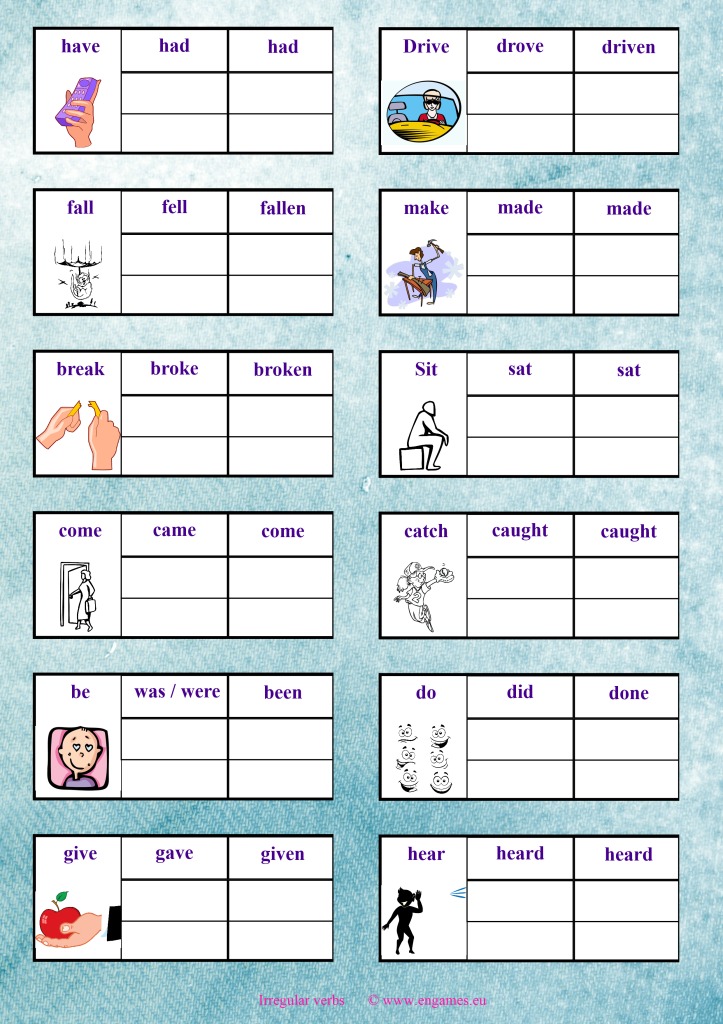
Here is the pdf version of all the irregular verbs:
Irregular verbs – Listen and learn
In learning there are only a few methods which work for everyone. One of them is called Random repeat. You are presented with something new and then after a short time you are tested. Then another new thing is presented and you are tested again. This is repeated several times and at the end you know a lot. You can try this method here. You will here three irregular verbs and then you will hear just the infinitive and you have 3 seconds (quite a lot of time actually) to supply the past tense and past participle. After the three seconds you will hear the correct answers and another verb. I hope it will work for you:
If you need just the correct pronunciation of each of the verbs presented above, here is the mp3 with all of the verbs:
You can download the files here:
All the irregular verbs
All the verbs learning mp3
Irregular verbs – games
Once you believe that you know the irregular verbs, it is time to practise them. Here there are two games for your mobile phones to practise the irregular verbs:
If you want to enjoy the game on the full screen click on the button:
Irregular verbs – Tower defenceIn the second game you should fill in the sentences with the correct words. If you pass the test you can play the game called Math pop and practise your maths at the same time.
If you want to play the game on a full screen, click the button below:
Irregular verbs – Math pop
You can find several online exercises at our new site grammarlane.com to practice irregular verbs.
There are some words you cannot live without in any language, and greetings certainly belong among those words and phrases. In this post I aim at introducing and teaching nine basic greetings for elementary students. To achieve this goal I there is a nice mind map and several games to practise these words.
Greetings – mind map
In this mind map there are the basic greetings ordered according to their frequency in British English. So the most frequent word in British English is “HI”.
ADVERT:
[showmyads]
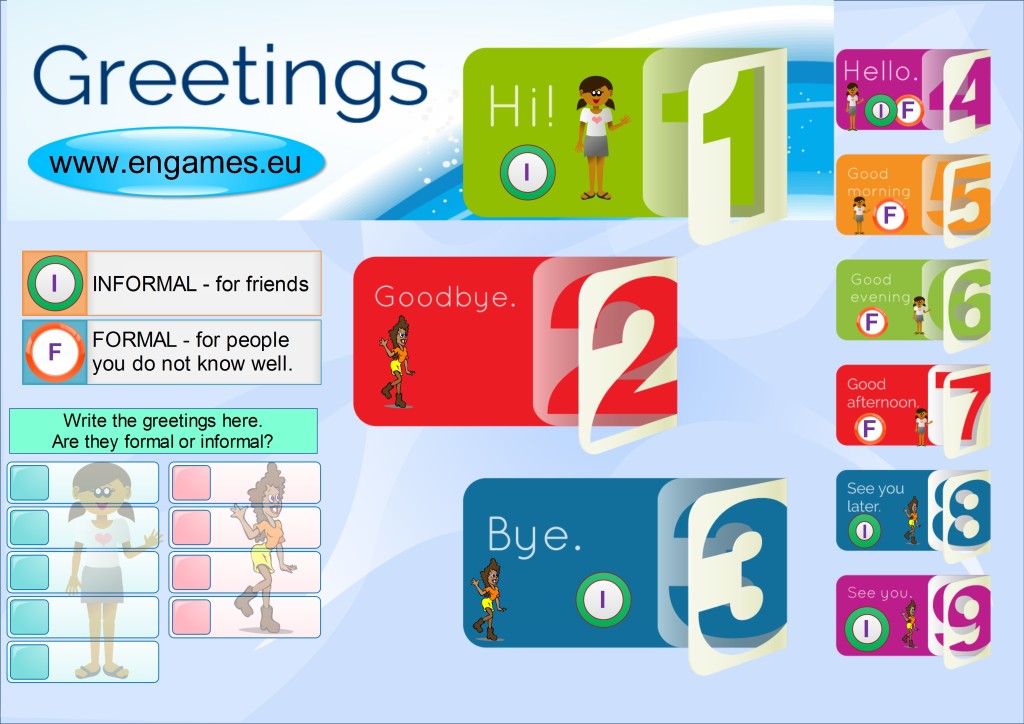
The letters in the circles show how formal or informal the given expression is. If it is informal we use the greeting with people we know well and our friends. With other people we use the formal greetings.
Notice that HELLO is both formal and informal. This greeting is often used instead of GOOD MORNING etc. and no one thinks you are being impolite.
Greetings – games
It is time to practise the greetings and learn them. The first game is in HTML 5 and it will play on any mobile device you use. It is a simple crosword. Click on any square and at the top of the crossword there will appear a clue. Then just type your answer. You can print out the crossword too and then solve it on a paper. It is up to you:
The other two games are in Flash and therefore they will play just on your desktop. The first one is called Teacher invaders and you have to answer all the questions with the correct greeting and then shoot all the invaders. Good luck.
The second game is called half a minute and it is suitable for classes with an interactive whiteboard. When you start the game there will appear the jumbled greeting and students have to write it on their paper and then one of them can type it into the computer. However, you have to do this in 30 seconds. Have a good fun with it.
SVOMPT rule is one of the most important rules in English. If students learn to follow this rule, their English will improve dramatically, and they will be understood. Once a student knows some words and follows the SVOMPT rule, we can say that he/she can speak English.
ADVERT:
[showmyads]
I love Darren Crown’s explanation of the origin of the SVOMPT word order. In his humorous book “Angličtina na rovinu” he writes that English was first used by a primitive tribe whose members did not want to use their brain too much and thus they created a word order which is always the same – Subject, Verb, Object, adverbs of Manner, adverbs of Place and adverbs of Time. So let´s stop looking for some complicated explanations and let´s think like the primitive barbarians and stick with the SVOMPT word order.
SVOMPT – mind map
The path shows the way an affirmative English sentence is created. You start with a Subject at the top and then you go down and add the words according to the SVOMPT rule.
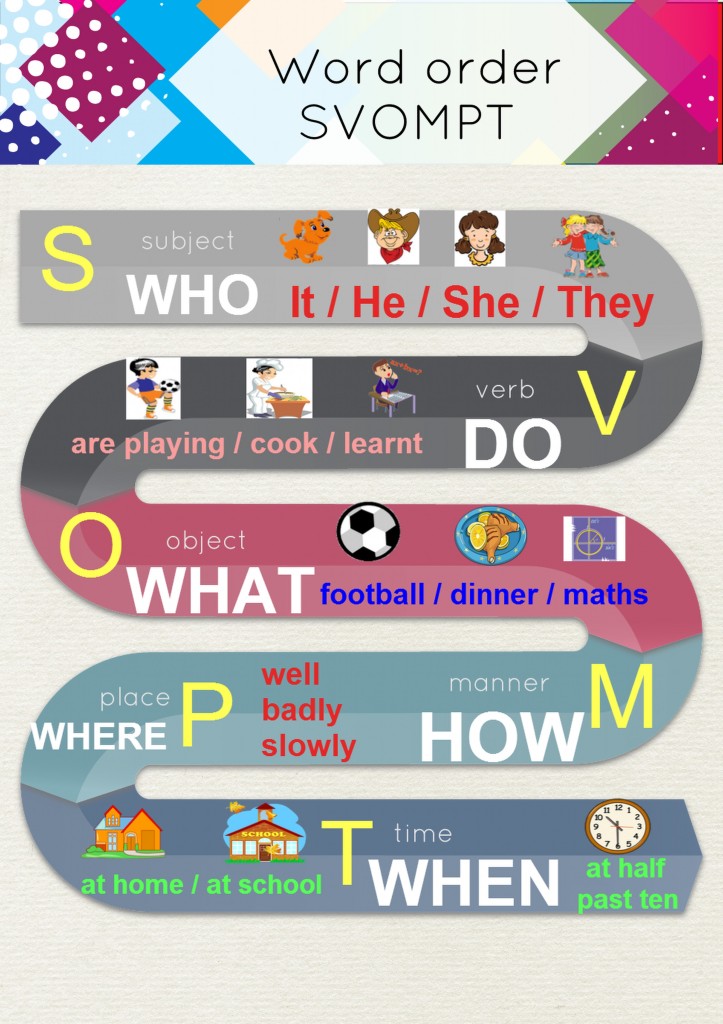
SVOMPT – games and quizzes
At the moment you feel you understand the grammar it is time to put your knowledge into practice. First, to be able to follow the rule you have to know what part of speech a given word is. You must know whether it is a Subject, Verb, Object, adverb of Manner, adverb of Place or adverb of Time to place the word into the correct place in an English sentence. To help you with this, you can try the following quiz where your task is to tell what part of speech a given word is. If you pass the test, you can play the game Angry finches.
If you want to play the quiz on the full screen, click on the button below.
In the second quiz your task is to put the sentence into the correct order. If you pass this quiz, you can improve your vocabulary in the game called Word Boggle.
If you want to play the quiz on the full screen, click on the button below.
Both games and quizzes are in HTML5 so they should play on all mobile devices.
Have you tried our vocabulary placement test for elementary students, and it was too easy for you? Have you scored close to 2000? Then this is the vocabulary test you should take. Here we test the words which belong between 2,000 and 5,000 most frequent words in English.
ADVERT:
[showmyads]
There are 60 questions and the score at the end tells you how many words from the 3,000 words you know. If you add this score to the score from the test for elementary students, you will know how many words from the five thousand most frequent words in English you know.
Vocabulary placement test – test
Give a try to the following test. The score at the end of the test tells you how many words you know. So if it tells you that your Score is: 2,350 points it means that you know 2,350 out of the 3,000 words which belong into the group of 2,000 to 5,000 most frequent words in English.
If you want to do the test on the full screen, click the button below. The test is made in HTML5 so it will play on your mobile phones as well:
Vocabulary placement test – full screen
If you want to know the total number of English words that you know among the 5,000 most frequent words in English take the Vocabulary test for elementary students and then add the score to the score from the test above. Thus if you score here 1,750 and in the elementary test 1,800, you know 3,550 words from the 5,000 most frequent words in English.
Remember, THE MORE ENGLISH WORDS YOU KNOW THE BETTER YOUR ENGLISH IS!!!!
Vocabulary placement test – comment
Please, if you spot a mistake, or you come up with a better definition, please leave a comment. We are trying to improve each activity, and your comments help us a lot.
Thank you.
Students like reading comics. Comics are often the only thing students read. When I started an extensive reading project last year, students did not mind reading comics, however when we moved to short stories, more than half of them stopped reading and started to hate the programme. On the basis of this experience I have prepared a fairy tale comic for students to read.
ADVERT:
[showmyads]
To be able to read a text and understand it, it is essential that you know the words. The more words you know the more you can enjoy the text. That is why I have so many materials dealing with the vocabulary here. First, learn the vocabulary with our associative method and then play the games. Once you know the words, watch the video and answer the comprehension questions.
Jack the Giant killer – vocabulary
First, learn the vocabulary using our associative learning method.
Associative learning method
When I study vocabulary, I am able to learn about 50 words a day. And here is how I do it.
The Associative learning method.
Take each word and find in your mother tongue or any other language you know some words it reminds you of. Thus for example, when I see the word GIANT I come up with these associations: Gigantic, Gigi (my former student´s nickname, anténa (antenae). When I create these associations I move to another word. I go on like this with four words. Then I cover the English words and I see just their translations and I recall them.
In this way I go on for as long as I feel like it and my vocabulary grows.
Vocabulary activities
Here are the words and materials to learn them using the associative method. You can verify your knowledge of the words at the end where there are two quizzes. If you pass the test you can play a game. All of the activities are in HTML 5 so you can learn using your mobile whereever you are.
For a better mobile experience it is better to click over here and see the activity full screen.
Vocabulary – associative method
If you prefer doing these activities offline, you can print out the following worksheets and try them out:
Word games_part01_giant
Giant_page_pdf – associative method worksheet
If you like crosswords on your computer, you can try the following one. It is in HTML5 so it will play on all mobile devices too:
Jack the Giant killer – crossword
Jack the Giant Killer – video
Now, that you know the vocabulary, you can watch the first part of the video and enjoy it.
And now try the comprehension quiz. If you pass the quiz you can play the game called HOT RACE. The quiz is in HTML 5 so it will play on any mobile device. However, the game is only in Flash and it will play on your desktop only.
If you want to play the quiz on full screen, click the following button:
Comprehension questions – part 1
Associative learning method – comments
- How did the method work for you?
- How many words were you able to learn this way?
- What problems did you encounter?
- Is there anything more you would like to tell us?
Do not hasitate and comment below. Thank you 🙂
Recently we have published a placement test based mostly on grammar. Some of our readers commented that a vocabulary placement test might be useful too. That was why we have tried to create a test which would show you how many words you know. A part of the test is partly based upon the test by Paul Nation, however the first part is completely original.
ADVERT:
[showmyads]
This test is for beginners and elementary students of English. Here you can find out, how many words from the 2,000 most common words in English you know. So, if you answer all the questions correctly, you know all the 2,000 most common words in English. If you answer only 50% of the questions, you know 1,000 words. Your aim is to score as much as possible.
Vocabulary placement test – beginners
The following test contains 60 items. Your task is to drag the most suitable word to a given picture or into a given gap. You can guess because there are many extra words which make correct guessing virtually impossible. Once you finish the resulting score tells you how many words you know.
If you want to do the test in a full-screen mode click over here for the HTML5 version:
Placement test vocabulary HTML5
If you want to do the test on your computer and you prefer flash, click on the button below:
Placement test vocabulary flash
If your score is close to 2,000 it is clear that you know more words. If you want to find out how many, you can try our Vocabulary placement tests for pre-intermediate and more advanced students (coming soon on this website.)
Vocabulary placement test – share
If you have a website where you would like to share this test, you can embed it there by placing the following code into it:
<iframe src="http://www.envocabulary.eu/placement test/Vocabulary placement test_beginners (Web)/index.html" width="560" height="500" frameborder="0" allowfullscreen="allowfullscreen"></iframe>
Vocabulary placement test – comments
We welcome any comments you might have, because they help us improve the posts here. We try to implement your comments into the activities immediately and we try to answer them. For example, there are nearly 20 comments to the Placement test post and thanks to you we were able to improve several questions, so now the test is much more reliable than it was before. Therefore do not worry and comment. THANK YOU.
Our most popular post is about questions with HOW. There is another post on all the WH question words. In this post I would like to deal with the questions starting with the word WHAT. To help you with this grammar there is a mind map and two games.
ADVERT:
[showmyads]
Questions with the word WHAT – mind map
The mind map shows the most frequent usages of the word WHAT in questions. What is most frequently followed by IS/ARE. Another possibility is, that it is followed by a NOUN. The most common nouns after the word WHAT are colour, kind of, sort of and time. And the third option is that the word WHAT is followed by DO/DID.
There are three set phrases which you should learn by heart: What happened? What is he like? and What does she look like?
The mind map clearly shows the usage of the word WHAT and it is designed in such a way that it can be used as a worksheet too. Your task is to write 10 correct questions starting with WHAT there.
Questions with the word WHAT – games
The first quiz and game in one has been designed in HTML5 so you can play it on any mobile device or a computer. Your task is to answer the quiz questions and if you pass the quiz, the game Word boggle is waiting for you. Your task is to find in 30 seconds as many words as possible. The longer the word the more points you get. At the end you can share your score on Facebook or here in the comments section. Good luck.
If you are using a mobile phone click here, to see it on the full screen.
Questions with WHAT – Mobile quiz
The second game is in flash and it will play only on desktops. It is called Penalty and your task is to answer the questions and score. Could you be a professional footballer?? 🙂
Placement tests are very important for students of languages. First, they can serve as motivation because they show whether the students improved their knowledge. Second, they help students choose the correct course on their level. And last but not least they inform students how good their English is.
ADVERT:
[showmyads]
However, good placement tests are very expensive and mostly printed. That is why we have decided to create a placement test that will be available for free and in electronic form. The test is in HTML5 so the students will be able to take it on whichever device they have. If you are administering the test, you just tell the students the URL and ask them to show you their results once they have finished. Thus they can do the test on their mobile phones or tablets.
Placement test
The test contains 60 questions. All of the questions are multiple choice questions and there are five options to choose from for each question. Please, do not guess. Answer only the questions you feel that you know.
If you are taking the test on a mobile device, it might be more comfortable to see it full screen. To get a full screen version of the test, click on the button.
As there were some problems with the server, I have added the flash version of the test. It is a bit quicker but it plays only on desktops (no iPads or mobile phones)
And here is another HTML5 version of the test, but it is placed on a different server. So if you experience any problems with the tests above, click here:
Placement test – share
If you have a blog or a website where you would like to share this test, you can do so by placing the following code there. To embed the test in your blog or website insert the following code:
<iframe width=”560″ height=”500″ src=”https://engames.eu/placement test/Placement test_share (Web)/index.html” frameborder=”0″ allowfullscreen></iframe>
To share the link, insert the following code.
https://engames.eu/placement test/Placement test_share (Web)/index.html
Please, do not forget to mention our site https://engames.eu if you share this
Placement test – Print version
As many teachers asked for a print version of the placement test, here it is. The file is in pdf:
And here you can see the key to the placement test:
Placement test – comments
Please feel free to comment on the test. Even though we have put in a lot of effort and we checked everything many times, there still might be some mistakes. Please, feel free to inform us about them. THANK YOU and good luck with the test.
UPDATE: Thank you for your comments. I have added the “Review your answers” option and I have corrected one of the questions. Please, if you spot a mistake, inform me. Please, do not write the number of the question, as the questions are chosen randomly. Thank you very much.
Placement test – updates
Thank you for your comments. I have read them all and I have tried to improve the test. Now you can check all your answers and see your mistakes. You can print out the results too. At the moment I am working on a vocabulary test and on the print version of the placement test.
If you want to share the test on your site and see your students’ results, contact me at rotreklzdenek_at_gmail_dot_com and I make the test send the results to your e-mail address.
Thank you for helping me improve the test.
I have already dealt with the usage of prepositions in the posts Prepositions AT, IN and ON for time and Adjectives with prepositions. However, this post is different because it concentrates only on the phrases IN THE END, AT THE END, IN TIME and ON TIME which are frequently used incorrectly by students of English. In this post I would like to explain the usage and meaning of the phrases. To achieve this I have created a mind map, an interactive video and two quiz games.
ADVERT:
[showmyads]
Set phrases – mind map
In this mind map I try to explain the meaning and the usage of the phrases IN THE END, AT THE END, IN TIME and ON TIME.
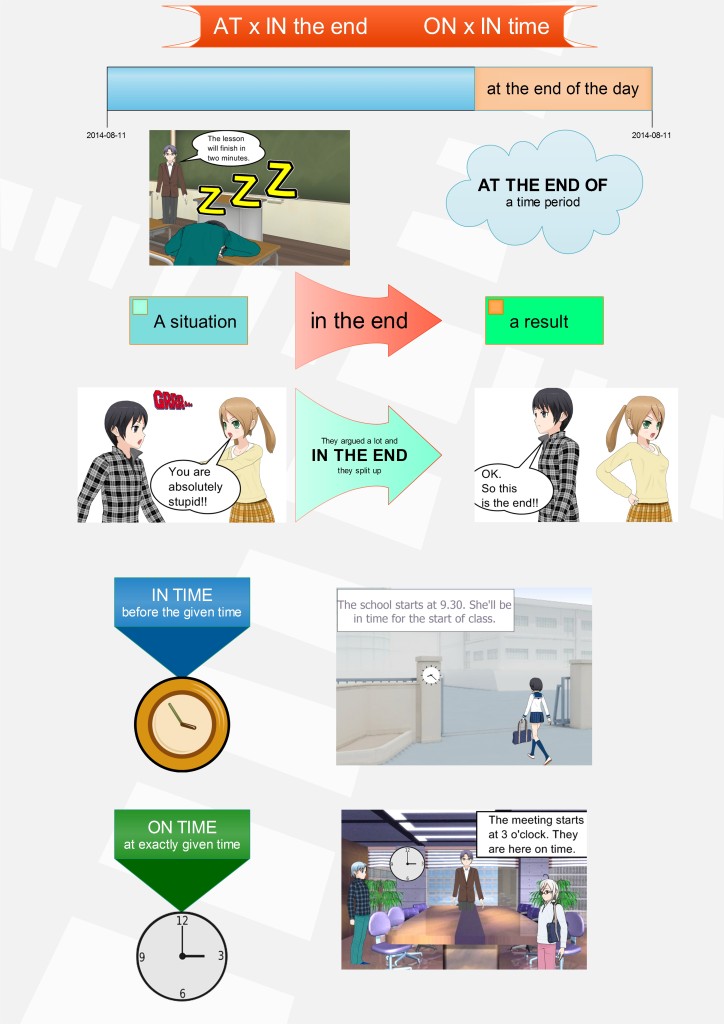
If you feel that this explanation is not clear enough, there is a video explanation which can help you.
Set phrases – interactive video
In this interactive video you can see and here the explanation of the usage of the phrases. The video contains many questions which you have to answer to move on. In this way you can check immediately whether you understand the phrases and use them correctly. The video is in HTML5 so it will play on your mobile device too.
Set phrases – games
Now, I hope, you understand the usage and meaning of the phrases IN THE END, AT THE END, IN TIME and ON TIME. So do not hesitate to try out our interactive exercises and games. The first game is in HTML5 and it will play on any mobile device.
Your task is to complete the quiz with the correct phrases and if you pass you will be given a chance to play the game Word boggle (really great addictive game which might help you improve your English a lot).
The second game will play only on your desktop. It is called Hoopshoot and your task is to choose the correct answer and then score. Good luck.
Means of transport is one of the topics you cannot avoid. Nowadays people travel a lot and they often have to do it on daily basis. And thus it is one of the most natural topics for a conversation in a class. Here you can learn the names of several means of transport and you can learn to speak about them fluently. To help you achieve this there is a mind map, a video, several worksheets and two games.
ADVERT:
[showmyads]
Means of transport – song
Start the lesson with the following song. It is fun and you can ask your students to count how many different means of transport they heard in the song:
The correct answer is 13.
In the following exercise, you can try listening again and tick all the means of transport you hear.
Means of transport – vocabulary
After introducing the vocabulary, it is time to learn it. The following worksheet contains three activities for you. There is a crossword, a spiral crossword and a set of jumbled words. Print the worksheet out and try to complete the activities.
Means of transport – worksheet
If you are a teacher, it might be a good idea to include the BINGO game in your lesson. There are 18 different BINGO cards for you to print out. You can either call out the words yourself or you can ask your students to write 3 sentences which contain one or two of their words. Then each student reads one of their sentences and the others cross out the words they hear. Do not forget to set the winning combination before you start the game.
Means of transport – BINGO cards
Means of transport – mind map
This part is the most difficult one. While the previous activities were for elementary students of English, this one is more suitable for pre-intermediate and intermediate learners. Print out the following mind map and then watch the video and complete it.
At the end of the video there is a task to speak about the given topics for the set times. You can, or better you should, use your mind map with your notes. If you can speak about the means of transport, the following games will be a piece of cake for you.
Means of transport – games
The first game is quite easy. Complete the quiz and if you pass you can play the game called Tower defence. The game and the quiz are in HTML 5 so they will play on your mobile device.
Means of transport – Indiara game
The second game is slightly more difficult. Your task is to complete the sentences from the video, so if you are not sure what there was, play the video on means of transport again. If you pass the test you can play the Indiara game. Good luck.
For many learners of English the slight differences between the words BIG vs. LARGE and HIGH vs. TALL are very difficult to understand. In this post I will try to make the differences clearer and easy to remember. To achieve this, I have come up with two videos, two quizzes and two mind maps. I hope you will undestand the differences now.
ADVERT:
[showmyads]
Confusing words – High and Tall video
The following video has been created by Australia + Learning English. This video clearly explains the differences in the usage of the words TALL and HIGH. Watch it and then complete the mind map below.
Once you have watched the video, try to complete the following mind map. Of course you can watch it several times if you need. Keep the completed mind map for your future reference.

Confusing words – BIG and LARGE video
BBC learning English produced a great explanation of the differences between the two words on their pages. I have just turned it into an interactive video, which you can see below. At the end of the video there is a quiz to check whether you remember the most important facts.
The sound track comes from: http://www.bbc.co.uk/worldservice/learningenglish/radio/specials/1837_aae/page24.shtml
ADVERT:
[showmyads]
To watch it full screen, click on the following button:
BIG and LARGE – video explanation
Once again it would be ideal if you completed the following mind map to remember all the facts about the usage of the two words.

Confusing words – revision
Now it is high time to practise all that you have learnt so far. In the following quiz you have to answer more than 70% of all the questions correctly to be able to play the game Angry Finches. Of course you can use all the materials from this post. All games and videos here are in HTML5 so they should play on your mobile devices.
If you want to see the quiz on the full screen, click the following button:
Confusing words – final quiz
In this post I would like to teach you how to use the words DESPITE, IN SPITE OF, ALTHOUGH, EVEN THOUGH, BECAUSE OF and BECAUSE correctly. I will explain the meaning of the words and the grammar. To help you with this there are two games, a mind map, a video explanation and a graphical explanation. I hope you will learn to use these conjunctions.
ADVERT:
[showmyads]
Conjunctions – meaning
The meaning of the conjunctions DESPITE and IN SPITE OF is the same. ALTHOUGH and EVEN THOUGH are the same as well. And so are the meanings of the words BECAUSE and BECAUSE OF. As you will see later the main difference between these words is their grammar.
The meaning of these conjunctions is clearly explained in the following graphics:
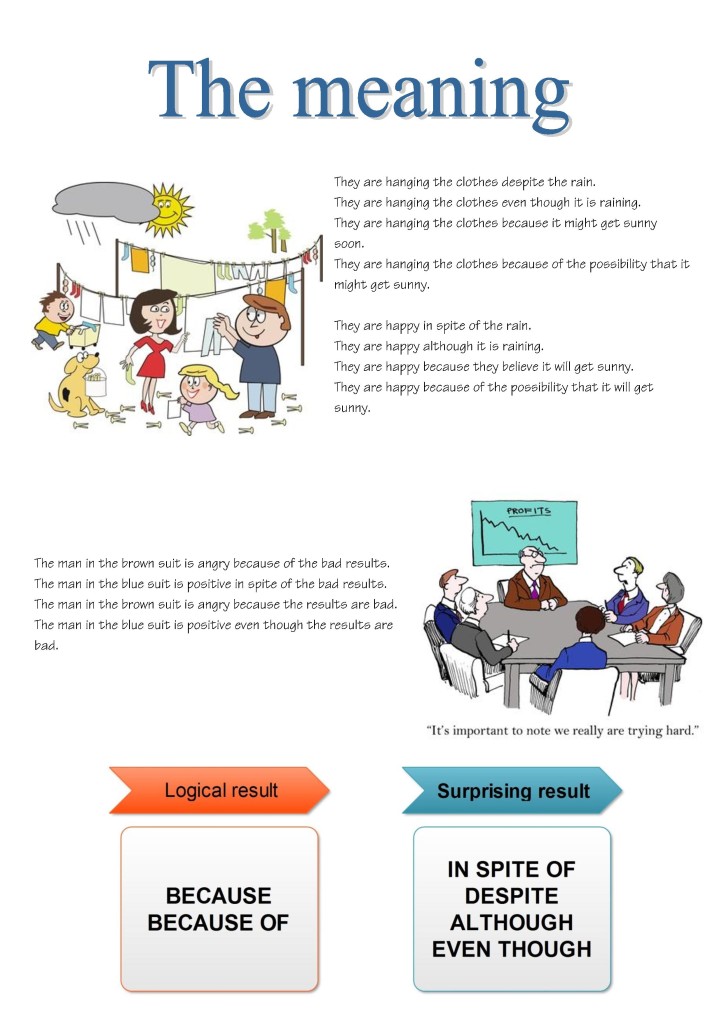
If you want to print out the graphic, you can download the pdf file below:
Conjunctions – the usage
As I write above, the main difference between the phrases is their usage. To cut the explanation short, the words DESPITE, IN SPITE OF and BECAUSE OF are followed by a noun phrase or a gerund (verb + ing). The conjunctions BECAUSE, EVEN THOUGH and ALTHOUGH are followed by a clause.
You can see the explanation again in the following mind map:
To make it absolutely clear, here is an interactive video explaining the usage of the words BECAUSE and BECAUSE OF.
This video uses the free recording offered by BBC learning English at http://www.bbc.co.uk/worldservice/learningenglish/radio/specials/165_gramchallenge10/
To experience the video full screen click on the following button (as it is HTML5 video it will work on your mobile too):
BECAUSE – video explanation
ADVERT:
[showmyads]
Conjunctions – quizzes and games
The first game is slightly easier but it can be played only on your desktop. It is called Hoopshoot and your task is to choose the correct conjunction. If you succeed you will be given a chance to score a basket.
The second quiz is fully in HTML5 so it will play on any mobile device you own. Your task is to connect both of the sentences into one and use the conjunction in the brackets. If you pass the test you will play the game called Math Pop and practise your Maths too.
If you do not know a sound, your brain filters it out when you hear someone using it. That is why it is crucial to teach sounds that do not exist in students’ mother tongue. Moreover, Adrian Tennant at www.onestopenglish.com claims that you should learn to hear and say the new sounds at the same time as the fact that you can produce the given sound makes it simpler for you to hear it. Ideal for this is the book Ship or Sheep. But the book is rather expensive and so you can try out similar exercises here which are free.
ADVERT:
[showmyads]
The aim of this post is to teach the pronunciation of the sound /θ/ which is the voiceless realisation of th. You can find here a video, a mind map and two difficult exercises to practise the voiceless th sound /θ/. Are you ready? So, let’s start.
Voiceless th sound – video
At BBC learning English there are wonderful videos with pronunciation explanations and demonstrations. Here you can see the BBC video:
Source: BBC learning English http://www.bbc.co.uk/worldservice/learningenglish/grammar/pron/sounds/con_voiceless_6.shtml
Voiceless th sound – mind map
Here is a simple mind map explaining the production of the voiceless th sound.
ADVERT:
[showmyads]
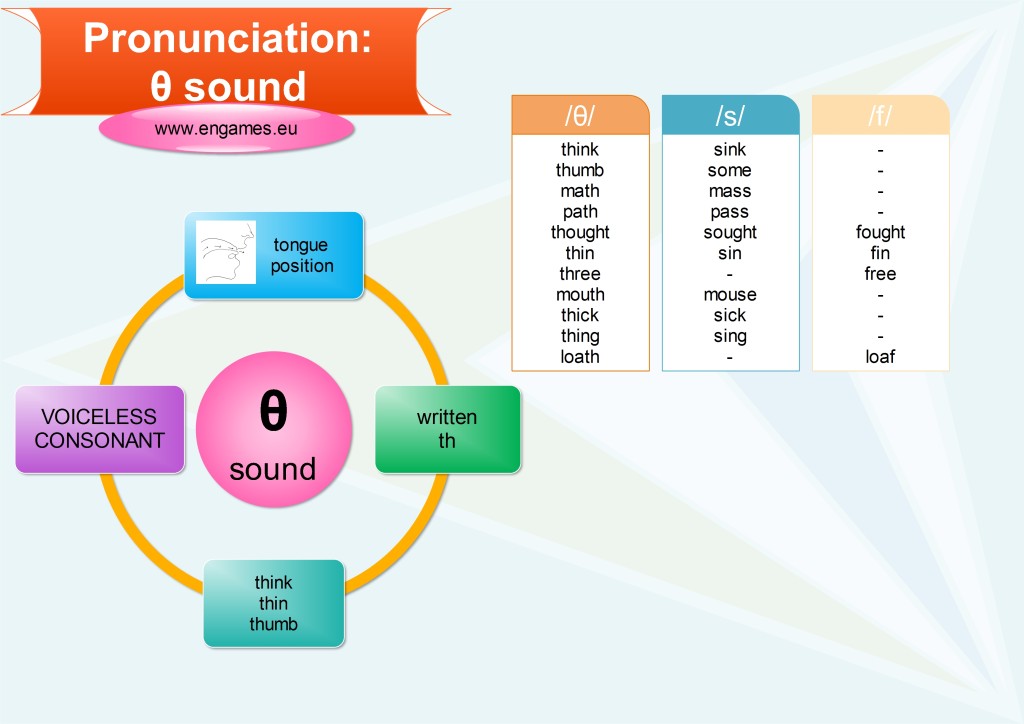
If you find the picture of the mouth showing the production of the TH sound too small here is the same picture again in a bigger size:
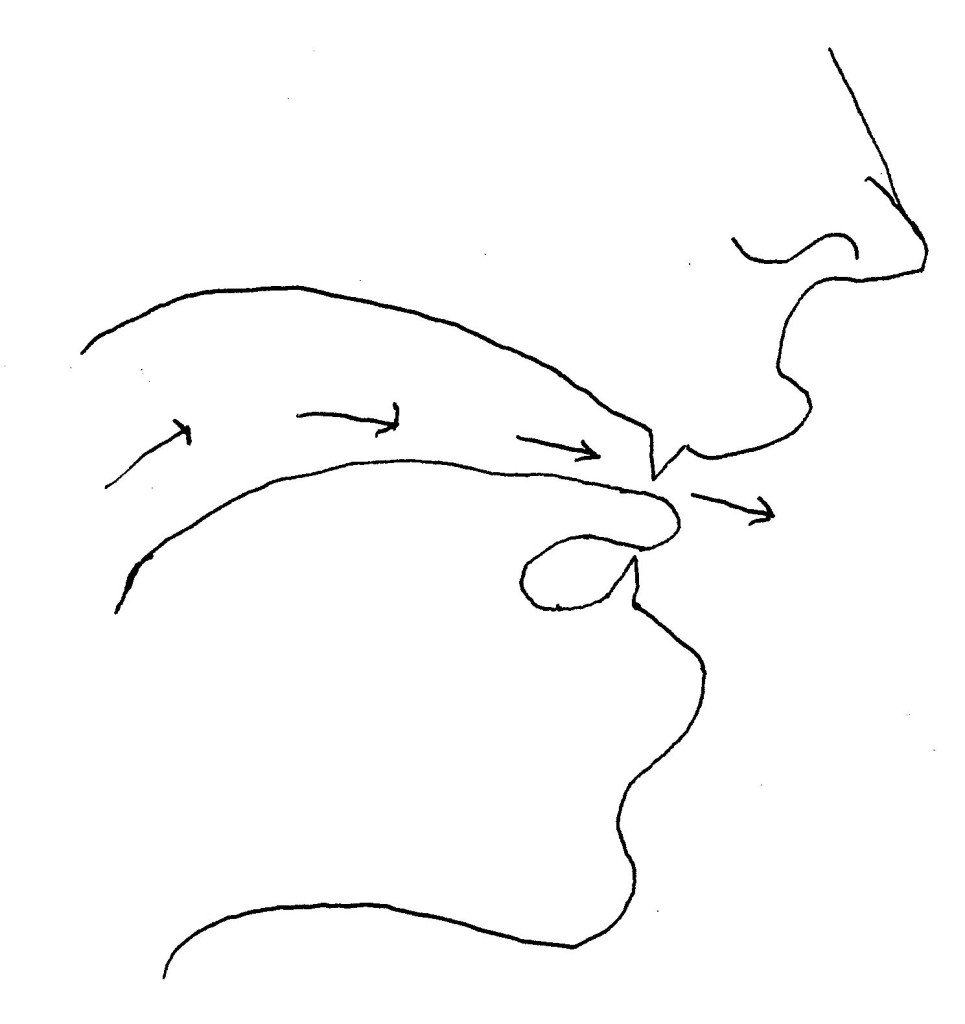
Voiceless th sound – games
Now that you understand the theory and you can at least partially produce the voiceless th sound, it is time to test your ears. There are two games here in which you should recognise the correct sounds /s/, /f/ and /θ/. It is not going to be easy 🙁
The first game is a bit easier. First listen to the demonstration of the different sounds and then listen and complete the sentences with the correct words. If you pass the test you can play the game called Math Pop. But you have to pass the test first :-).
The second game is slightly more difficult. You will hear five sentences each time and you have to decide which sequence you have heard. If you pass this test you can reward yourself with the game called Angry finches. Good luck.
Hope, want and would like belong into the group of verbs which are followed by the infinitive. If you click the link above you can see a complete solution for these verbs for intermediate learners of English. In this post we would like to teach how to use only the three verbs HOPE, WANT and WOULD LIKE so it is suitable for elementary learners of English.
We are not going to explain the differences in meaning as these are very small and the best way about them is by consulting a bilingual dictionary. In this post we would like to deal with the grammar of these three verbs (they are followed by the infinitive with TO). There are two games, a mind map and a worksheet to practise or learn the given grammar point.
Verbs followed by TO infinitive – graphic
The verbs WANT, HOPE and WOULD LIKE are followed by TO and infinitive. See the mind map below:
ADVERT:
[showmyads]

If you are a teacher, you can ask your students to use the mind map above and make as many sentences as they are capable of. Of course, they will have to add some words to start and finish the sentences.
The second graphic features three jokes which contain the target structures and then the students should write their own jokes using the structures given.
Verbs followed by TO infinitive – games
In the following two games the students have a unique opportunity to practise the verb patterns with the verbs WANT, HOPE and WOULD LIKE. The first game is called Math Pop. Your task is to put the words into the correct order and then, if you have more than 70% correct answers, you have to pop as few balloons with the correct numbers as possible. Good luck
The second game is called Tic-Tac-Toe. Your task is to drag the words into the correct places and then win the game. Place the crosses into such places to have three in a row. There is just one way to win the game. Can you find it?
Recently I published a post on TV programmes vocabulary. In this post I would like to add a few activities to help the teachers prepare a great lesson on this topic and to give students a few more activities to practise the vocabulary.
ADVERT:
[showmyads]
Unlike in the previous posts, there are several worksheets which you can print out and use. There is a song and a gap fill, a bingo worksheet and a worksheet with five more activities to practise the vocabulary connected with TV programmes. And of course there is a mind map to help you remember the new words better.
TV programmes – song
I love using songs at the beginning of a lesson. Especially if they are popular, they can serve as a great starter. If you are just a learner of English, you can try the interactive quiz below.
For this lesson, I am going to use the song Throw Away your Television by Red Hot Chilli Peppers.
Complete the lyrics:
I you need the lyrics for your classroom or a you simply prefer paper materials, here are two pdf files.
TV song_red hot chilli peppers
TV song red hot chilli peppers – key
At the end of the song I will elicit the topic of the lesson by the following questions:
What will be the lesson about?
What will we learn?
Once I get the topic of the lesson out of the students I move to the other part of the lesson.
TV programmes – Vocabulary presentation
There are three ways to go about presenting vocabulary. I would use the video from the previous post on TV programmes vocabulary and the following mind map.
If you do not like any of the materials above, all the new vocabulary is listed in the worksheets too.
TV programmes – Vocabulary practice
The practice is based upon the following worksheets. Print them out and follow the instructions:
If you have already presented the students with the video and a mind map, start with the second exercise. Students should put the words into the correct form and complete the sentences. Once they complete them, discuss the questions in pairs and then as a whole class.
The other exercises are quite simple and quite fun. Ask the students to do as much as they can in 10 minutes. You can give them the answers at the end of the activity or you can check their answers.
Once we do the worksheets, I give my students a chance to use the new words creatively. Ask them to write 3-10 questions using the new words. Help the struggling students by giving them the simple example What sports programmes do you watch? and show them that they can create 12 questions by replacing the words sports programmes with other TV programmes vocabulary.
When the students write the questions give them a chance to ask you their questions. Answer the questions and at the same time you have a chance to correct the most striking mistakes.
After a while ask the students to discuss the questions in pairs.
ADVERT:
[showmyads]
At the end of the lesson I try to put a game. This time I have prepared the Bingo game for my students. Print out the following worksheet and cut it. Shuffle the cards and give each student one. Ask them to work in pairs and say the names of the TV programmes they have on their cards. They can ask you if they are not sure.
If you are sure that the students know all the words there are two options for you. You can either read the words yourself or I ask each student to say one of the words. Remember to state the winning combination before you start the game.
And that is the end of the lesson. If I count correctly, the lesson will take about 40 minutes.
When students hear the phrase indirect questions, they get scared. But actually this is one of the easiest grammar points in English. The only thing you have to watch out for is that if a sentence starts with a certain phrase (Do you know or Could you tell me etc.) you have to use the word order for an affirmative sentence. To put it simply, after the aforementioned phrases do not make questions.
ADVERT:
[showmyads]
To help you master this grammar there is a mind map, a video and several games in this post.
Indirect questions – video
The following video is based upon BBC learning English recording. To make it easier for learners of English to follow I have added the text and illustrations.
We recommend that you watch the video and stop the recording every time there is a task and answer the task before MASA does. It is a great fun and a superb way to learn English.
If you want to watch it full screen, click here:
Indirect questions video
Indirect questions – mind map
The following mind map tries to show the rules for indirect questions in a graphical form. As you can see each indirect question has to start with a phrase signalling that it is an indirect question. Then you use a question word or IF/WHETHER (if there is no WH.. word) and the word order of a normal statement.
ADVERT:
[showmyads]
Indirect questions – games
Now it is time to practise what you have learnt in the following games. The first one is a quiz with two games. If you answer the quiz correctly you can play the games called Angry Farmer and Math Pop. Both the quiz and the games are in HTML5 so you can play them on your mobile phones.
The second game is in Flash and it will play only on your desktop. It is the notorious On target game. If you choose the correct option you will be given a chance to shoot the bad ducks. Moreover, you can get a bonus if you shoot one of the bottles on the sides. Enjoy.
Vocabulary videos
On Youtube we have created a new channel which contains all the vocabulary videos we have created. Here are some of them. So do not miss them:
You can learn the words connected with the environment at http://youtu.be/PbBR1sNc6C4
There is a vocabulary video introducing the Town features at http://youtu.be/5Plh_LBjwks
At http://youtu.be/c0T5j-5MEg8 you can learn some vocabulary to speak about Plants in English.
For young learners we have some names of Animals at http://youtu.be/wb6Ctlvz0Ys
If you want to learn more vocabulary on Sports you can go to http://youtu.be/14_5rLiIAm0 and learn the names of Winter Olympics sports
At http://youtu.be/9IWZb61DG1M you can learn Clothes Vocabulary
Furniture vocabulary is presented at http://youtu.be/7VOpE1n74h0
One of the most difficult parts for learners of English to learn are personal qualities.
To help you with this, you can try the video at http://youtu.be/3KisHI5O6WY
Category: English games, Grammar, Intermediate
EFL, English, ESL, games for indirect question, Grammar, grammar games, indirect question, indirect questions explanation, indirect questions grammar, indirect questions mind map, intermediate, intermediate students, learn, learn English, learning English games. English learning games., mind map, school, students, TEFL, TESOL



